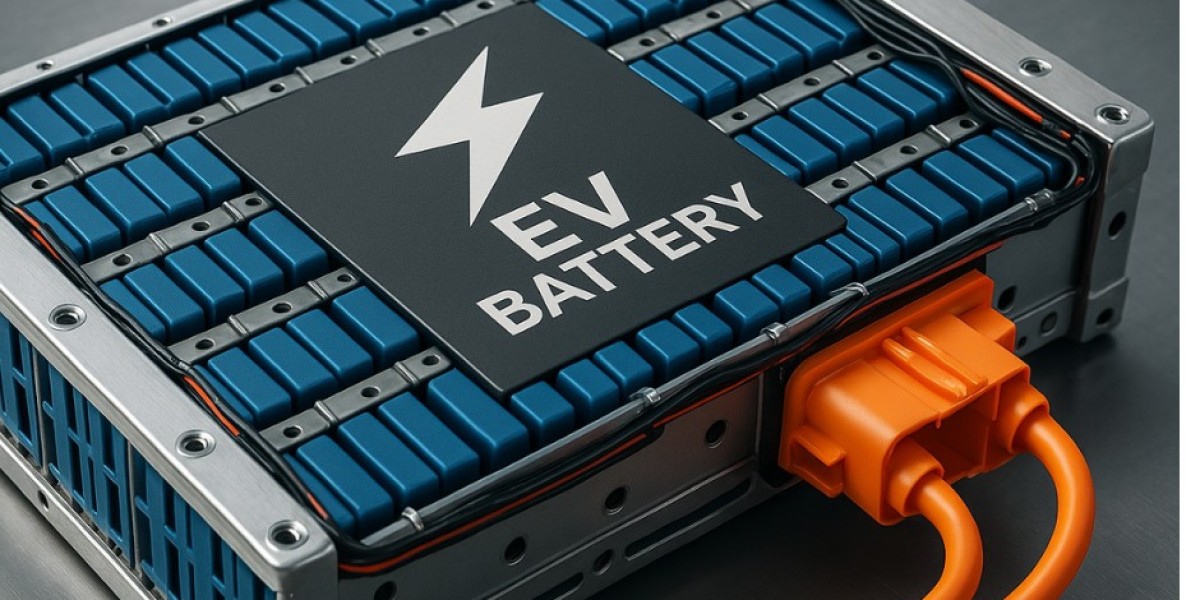The electric vehicle (EV) battery market is at the heart of a transformative shift in the global automotive landscape. As nations accelerate toward decarbonization and energy independence, batteries—particularly lithium-ion—have become the cornerstone of mobility innovation. With demand for electric vehicles surging, the EV battery market has evolved into a critical segment, driving investment, technology advancement, and geopolitical maneuvering. This article delves into the structure, growth trends, challenges, regional dynamics, key players, and future projections of the EV battery market.
Market Overview and Growth Trends
The global EV battery market has experienced explosive growth over the past decade. Valued at approximately USD 50 billion in 2022, it is expected to surpass USD 200 billion by 2030, growing at a CAGR exceeding 20%. This growth is fueled by tightening emissions regulations, government incentives, and rapidly advancing battery technologies.
Lithium-ion batteries remain the dominant technology due to their high energy density, long life cycle, and declining production costs. Innovations in battery chemistry—like lithium iron phosphate (LFP), nickel manganese cobalt (NMC), and solid-state batteries—are also redefining performance and safety standards. Automakers and tech companies are racing to develop batteries that offer faster charging, longer range, and improved thermal stability.
Key Battery Chemistries in Focus
Lithium-Ion (Li-ion): The current industry standard, with NMC and LFP as the most popular subtypes. NMC offers higher energy density, while LFP is cheaper, safer, and gaining traction in mass-market EVs.
Solid-State Batteries: Seen as the next frontier, these promise higher energy density, faster charging, and improved safety. Companies like Toyota and QuantumScape are investing heavily in bringing solid-state batteries to commercial viability by the late 2020s.
Lithium-Sulfur and Sodium-Ion: These emerging chemistries could offer cost-effective alternatives, though they are still in early research and development phases.
Regional Market Dynamics
Asia-Pacific: The Powerhouse
Asia-Pacific dominates the EV battery market, accounting for over 50% of global production. China leads with its vertically integrated supply chains, massive domestic demand, and aggressive policy support. Companies like CATL, BYD, and EVE Energy are global giants, supplying both domestic and international automakers.
South Korea and Japan are also pivotal players. South Korea's LG Energy Solution, Samsung SDI, and SK On are among the top global suppliers, leveraging strong R&D and partnerships with Western automakers. Japan’s Panasonic, long-time partner of Tesla, continues to innovate in battery technology and manufacturing efficiency.
Europe: Rapid Expansion
Europe has emerged as a fast-growing market, driven by strict emissions regulations (such as the EU’s 2035 ICE vehicle ban), carbon neutrality goals, and local EV demand. To reduce reliance on Asian imports, the EU has launched initiatives like the European Battery Alliance (EBA) to build local capacity.
Gigafactories are sprouting across Germany, Sweden, France, and Hungary. Companies like Northvolt (Sweden), ACC (France), and joint ventures like Volkswagen-PowerCo are leading this charge. The European market is also placing a strong emphasis on battery recycling and sustainable sourcing of raw materials.
North America: Scaling Up
The U.S. EV battery market is undergoing significant development, spurred by the Inflation Reduction Act (IRA), which provides tax incentives for domestically produced EVs and batteries. Tesla, through its Gigafactory in Nevada, and partnerships with Panasonic, is a major player.
New entrants and joint ventures—such as GM and LG's Ultium Cells, Ford and SK On, and Redwood Materials—are investing billions in U.S.-based manufacturing and recycling capabilities. Canada also plays a crucial role due to its reserves of lithium, cobalt, and nickel.
Middle East, Africa & Latin America: Emerging Opportunities
These regions are not yet dominant in battery manufacturing but are vital in the global supply chain due to their rich deposits of lithium (Argentina, Chile), cobalt (DR Congo), and graphite (Mozambique). Investment in extraction and processing is increasing, with efforts to ensure ethical sourcing and local economic benefit.
The Middle East, particularly Saudi Arabia and the UAE, is also investing in EV and battery ventures as part of economic diversification efforts.
Supply Chain and Raw Materials
EV batteries rely heavily on a range of critical minerals—lithium, cobalt, nickel, manganese, and graphite. The growing demand for these materials has exposed vulnerabilities in the global supply chain.
Lithium: Key producers include Australia, Chile, and China. Innovations like direct lithium extraction (DLE) are being explored to improve sustainability and efficiency.
Cobalt: Sourced primarily from the Democratic Republic of Congo, raising ethical and environmental concerns. Manufacturers are working to reduce cobalt usage or source it more responsibly.
Nickel and Graphite: Indonesia is becoming a key player in nickel, while China dominates the processing of natural and synthetic graphite.
Efforts are underway to localize supply chains, diversify sourcing, and invest in battery recycling to mitigate environmental impact and geopolitical risks.
Key Players in the EV Battery Market
CATL (China): The world’s largest battery maker, supplying Tesla, BMW, and others.
LG Energy Solution (South Korea): Partner to GM, Hyundai, and Honda.
Panasonic (Japan): Longstanding Tesla partner, innovating in high-energy density cells.
BYD (China): Vertically integrated, supplying its own EVs and external clients.
Samsung SDI (South Korea): Known for high-quality cells, partnered with BMW and Stellantis.
Northvolt (Sweden): Europe’s rising star, focusing on sustainable batteries.
New players like QuantumScape (solid-state tech), Sila Nanotechnologies (silicon anodes), and StoreDot (ultrafast charging) are challenging the status quo with cutting-edge innovations.
Challenges and Bottlenecks
Despite the rapid growth, the EV battery market faces several challenges:
Raw Material Shortages: Supply constraints and price volatility for lithium, cobalt, and nickel threaten stability.
Environmental Impact: Mining and battery production have significant environmental footprints; sustainable practices and recycling are crucial.
Technological Barriers: Solid-state and alternative chemistries are still years from mass-market readiness.
Geopolitical Risks: Dependence on specific countries for raw materials and components creates strategic vulnerabilities.
Recycling Infrastructure: Efficient, scalable battery recycling is still under development in many regions.
Innovations and Future Outlook
The future of the EV battery market will be shaped by several transformative trends:
Solid-State Batteries: Expected to enter commercial EVs by 2027–2030, offering higher energy density and safety.
Battery-as-a-Service (BaaS): Especially in China and India, battery swapping and leasing models are gaining popularity.
AI and Battery Management Systems (BMS): Smart BMS are improving battery lifespan, performance, and predictive maintenance.
Second-Life Applications: Used EV batteries are being repurposed for stationary energy storage systems, contributing to circular economy models.
Green Manufacturing: Emphasis on low-carbon production, renewable-powered gigafactories, and reduced water use is increasing across the board.
Conclusion
The EV battery market is not just an automotive sub-sector—it is the linchpin of the global energy transition. As electric vehicles become mainstream, batteries will increasingly determine range, performance, and cost, shaping consumer choices and industrial strategies alike. While challenges remain, the convergence of policy, technology, and investment signals a strong and sustained trajectory for the market.
As the world races to achieve net-zero emissions, the evolution of the EV battery industry will be instrumental in redefining mobility, energy systems, and industrial power structures for decades to come.
Electric Vehicle Battery Charger Market
Automotive Battery Thermal Management Market
Automotive Li Ion Battery Market
Electric Rickshaw Battery Market






